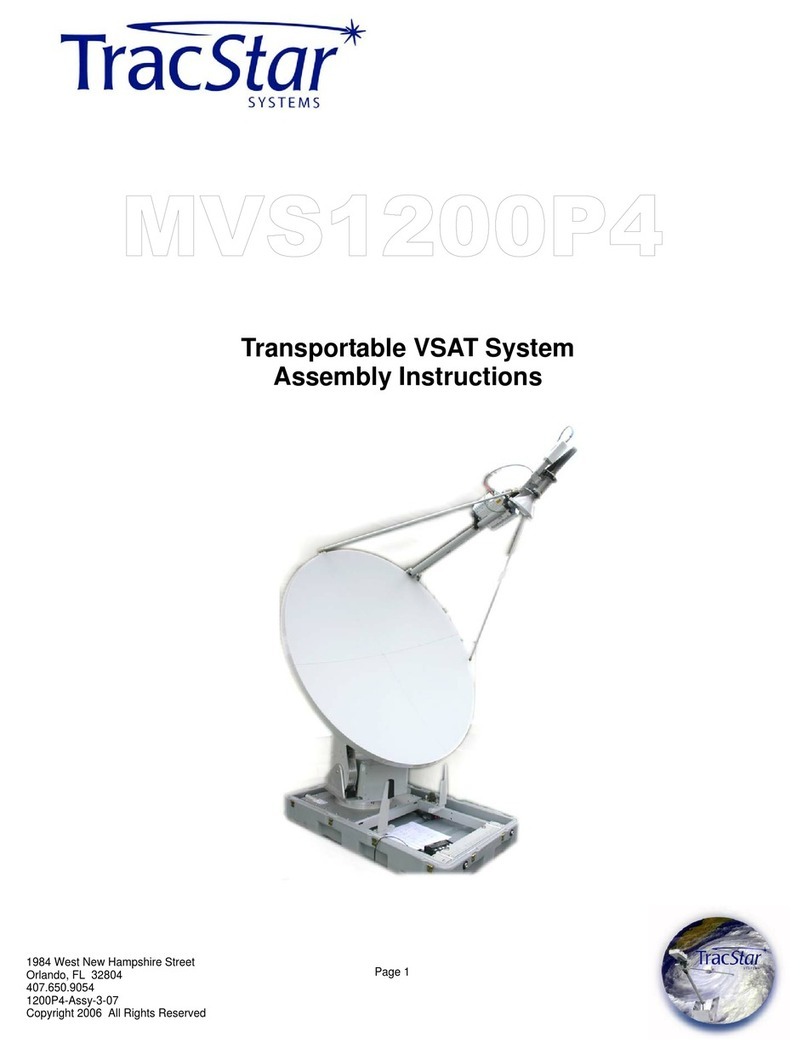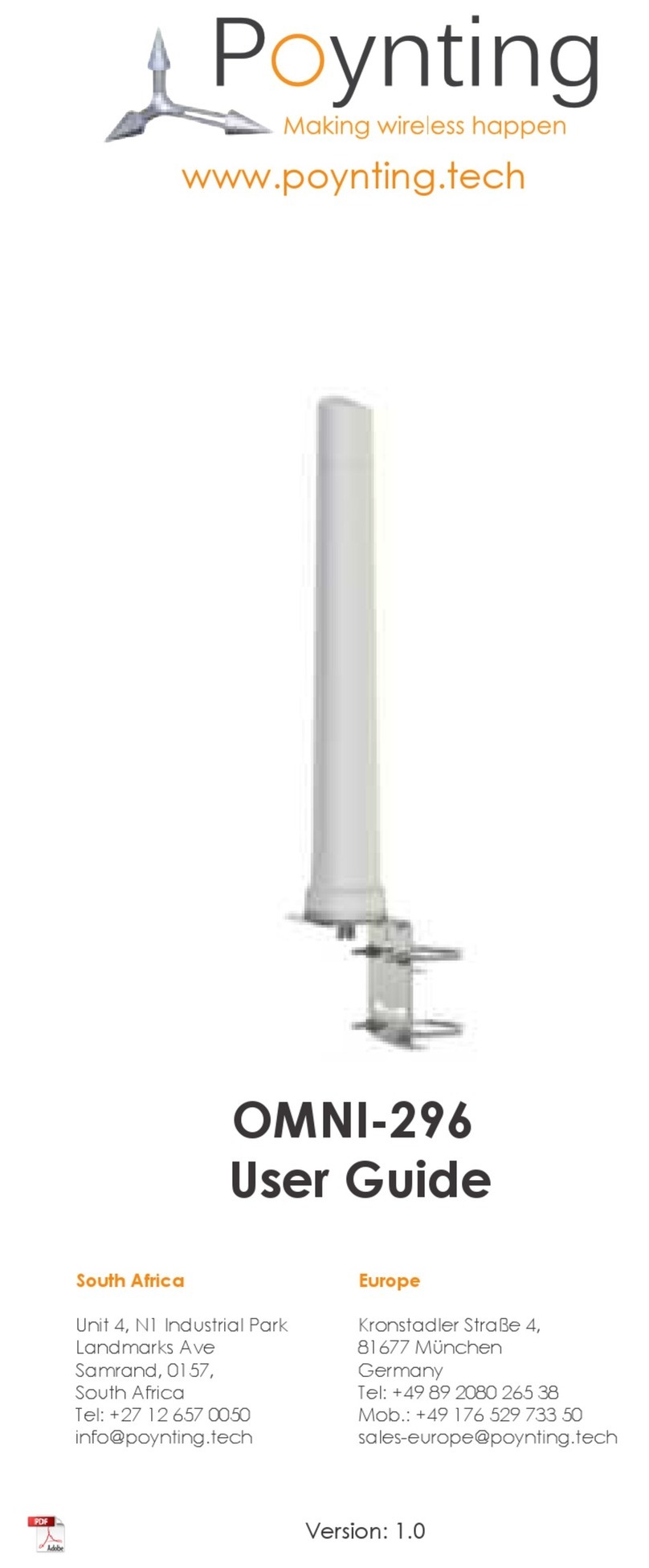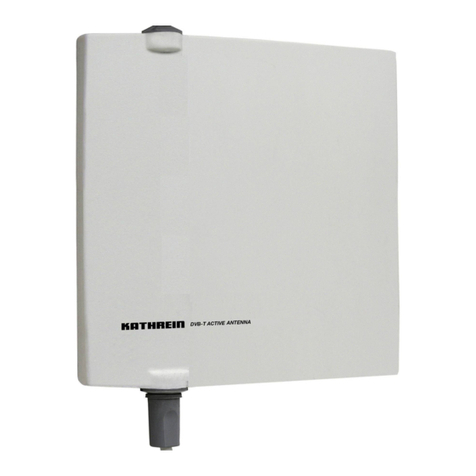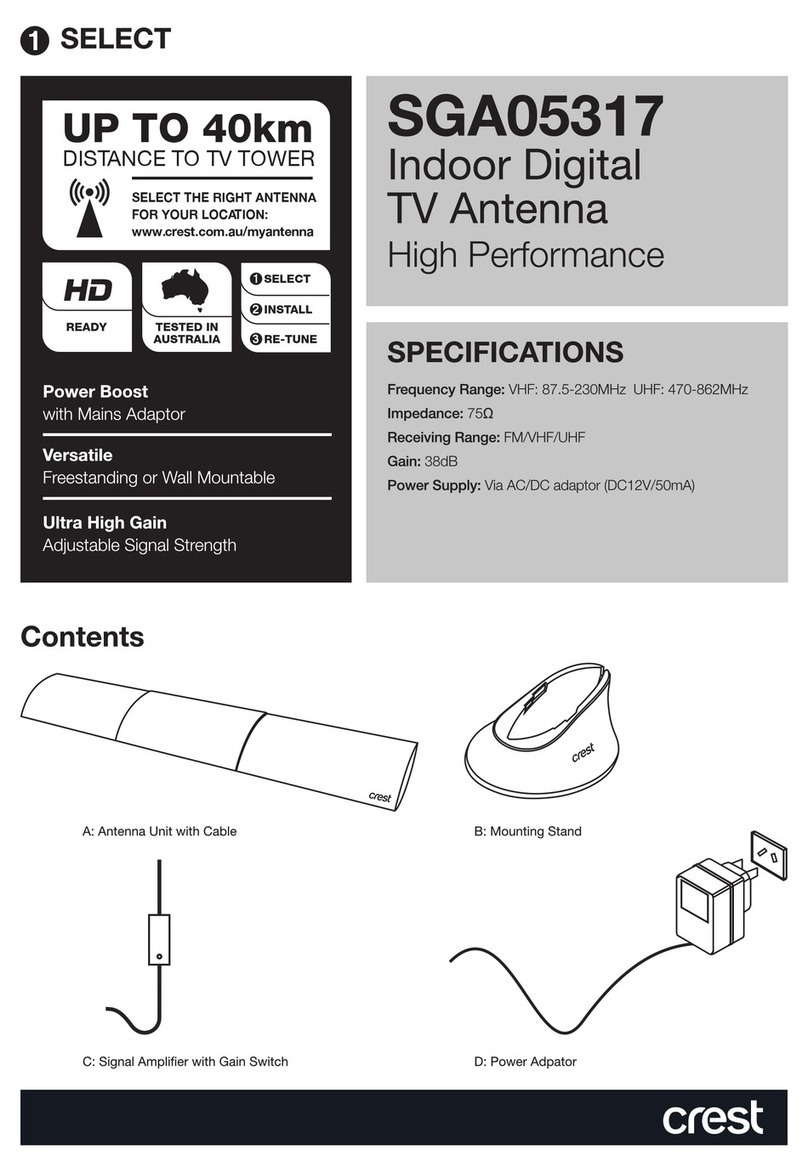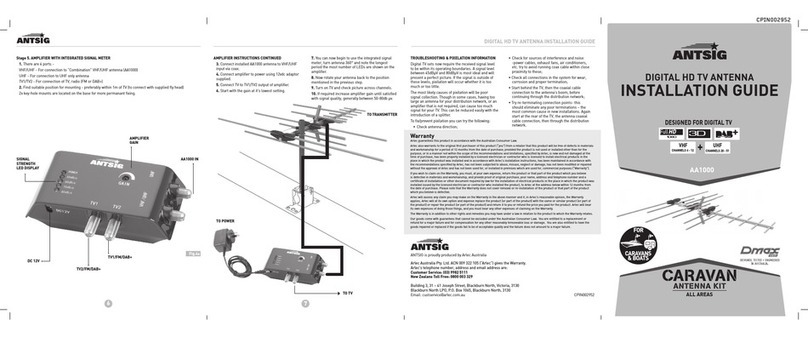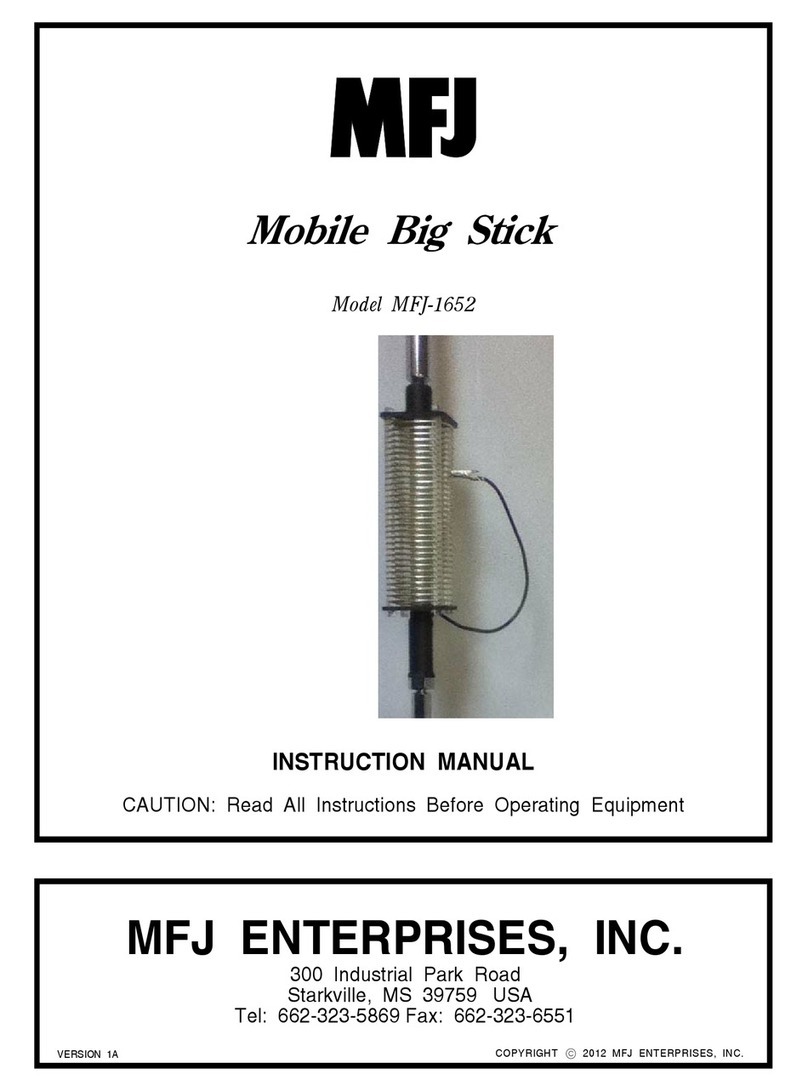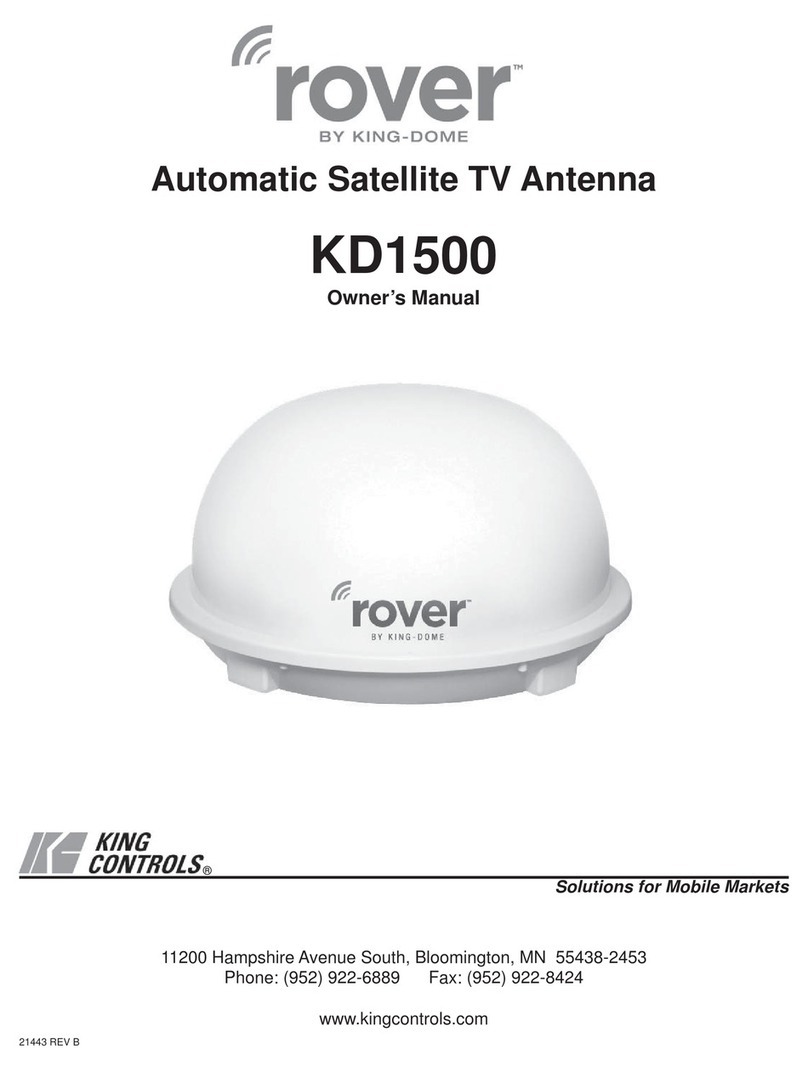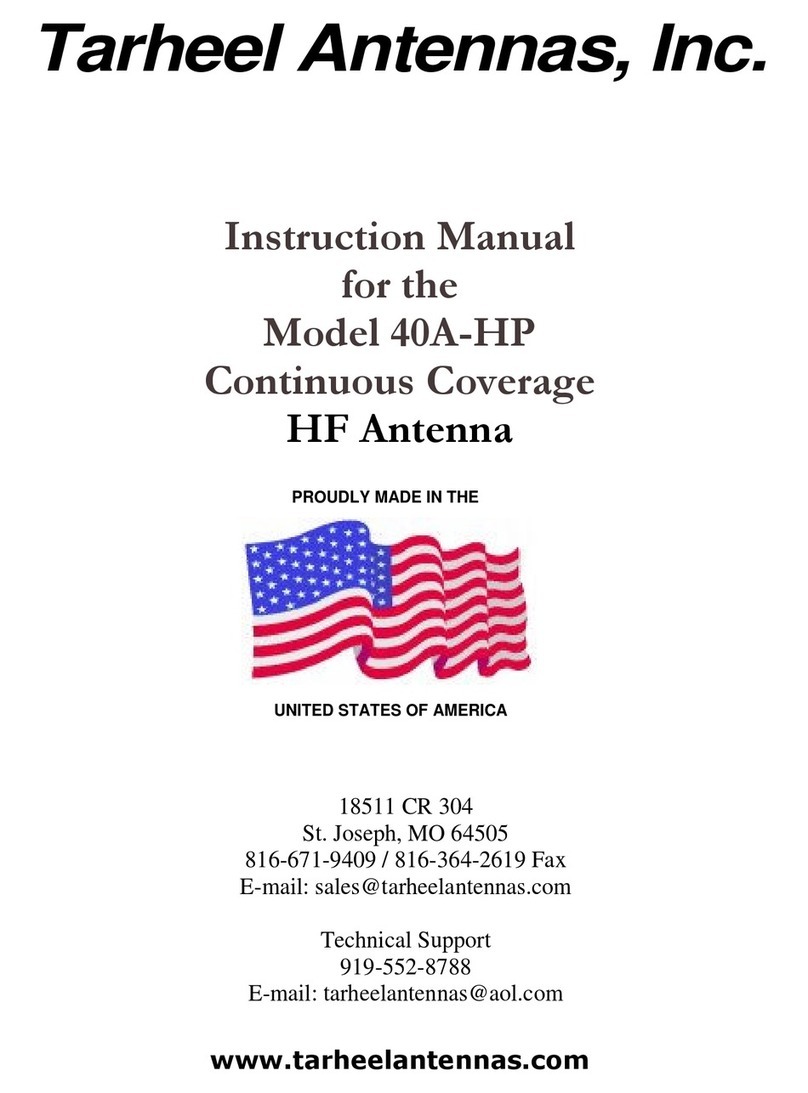Dielectric TFU User manual

1
March 2010. Rev 0
5 September, 2013. Rev 1
Dielectric LLC
22 Tower Road
Raymond, ME 04071
Phone: 800.341.9678
TFU-TYPE SIDE MOUNTED
PYLON ANTENNAS
INSTRUCTION MANUAL

2
TABLE OF CONTENTS
WARNINGS ................................................................................................................................3
Figure 1............................................................................................................................................................................ 5
DESCRIPTION...........................................................................................................................5
General...................................................................................................................................5
Equipment for Installation......................................................................................................6
Delivery and Storage..............................................................................................................6
Figure 2............................................................................................................................................................................ 7
Inspection ...............................................................................................................................7
ANTENNA UNLOADING AND ASSEMBLY ........................................................................7
Figure 3............................................................................................................................................................................ 8
ASSEMBLY..................................................................................................................................8
Assembly of Center Fed Tee Antenna.....................................................................................8
Figure 4.......................................................................................................................................................................... 10
Figure 5.......................................................................................................................................................................... 11
Figure 6.......................................................................................................................................................................... 12
Lightning Protector Assembly and Mounting. (if a support pole is used)...........................13
Pole Step Installation. (if a support pole is used) ...............................................................13
Fin Installation.....................................................................................................................13
Dipole Installation................................................................................................................13
Radome Installation:............................................................................................................13
FINAL PRE-INSTALLATION PROCEDURES...................................................................14
Top Mounted Obstruction Light (Beacon or Strobe, If a support pole is used )..................14
Inspection of Antenna Components......................................................................................14
ANTENNA INSTALLATION.................................................................................................15
General.................................................................................................................................15
Lifting Antenna.....................................................................................................................16
Figure 7.......................................................................................................................................................................... 16
Top Mounted Support Pole...................................................................................................17
Side Mounted Antenna - Dielectric Supplied Mounts ..........................................................17
Side Mounted Antenna - Mounts Supplied by Others...........................................................17
FINAL TEST.............................................................................................................................18
MAINTENNANCE...................................................................................................................18
ADDRESS:.................................................................................................................................18
APPENDIX 1............................................................................................................................19
PLUMBNESS SPECIFICATION......................................................................................................19
APPENDIX 2.............................................................................................................................19
A325 BOLT INSTALLATION SPECIFICATION...............................................................................20
APPENDIX 3.............................................................................................................................21
HOSE CLAMP AND STAINLESS STEEL BOLT INSTALLATION SPECIFICATION...............................21

3
WARNINGS
FAILURE TO COMPLY WITH THESE INSTRUCTIONS MAY RESULT IN A SERIOUS
ACCIDENT.
•NEVER CLIMB OR WORK ON THE ANTENNA WHILE RF POWER IS BEING FED
TO IT. WHEN WORKING ON THE ANTENNA ARRANGEMENTS SHOULD BE
MADE WHICH WILL GUARANTEE THAT RF POWER WILL NOT BE APPLIED
WITHOUT SPECIFIC INSTRUCTIONS FROM PERSONNEL ON THE TOWER.
•THE ANTENNA IS A COMPLEX ELECTRICAL DEVICE THAT HAS BEEN BUILT IN
ACCORDANCE WITH STRICT TOLERANCES AND QUALITY CONTROL. PLEASE
HANDLE IT WITH CARE.
•CAUTION: Under no conditions should the spoke short bolts or the spoke short locking
plate bolts to be loosened! Do not paint the bottom of the base flange at the tee contact
surface!
•PLEASE HEED ALL WARNING LABELS ATTACHED TO THE ANTENNA.

4
Introduction
Many issues need to be considered during the planning, purchase and installation of
a new Dielectric TFU UHF television antenna. The purpose of this book is to assist
the station with the final phase of their project; the delivery, inspection, assembly,
and installation of their antenna. The general features of the Dielectric type TFU
UHF Pylon television side mounted antennas are discussed herein as well as proper
installation, handling, and storage procedures. It is essential for the customer and
their representatives to become familiar with this information.
Each TFU antenna is designed to meet the requirements of a particular installation
therefore exact dimensions are not provided in this book. Drawings containing
dimensional specifications and other pertinent data are furnished with the antenna.
These drawings should be referred to during assembly, erection and testing. Please
contact Dielectric if questions arise.

5
Figure 1
Antenna Configurations
DESCRIPTION
General
Dielectric side mounted UHF Pylon Television Antennas (TFU) consist of slotted aluminum
pipes with diameters and wall thickness of proper size to provide the specified electrical and
mechanical requirements. These antennas are supplied in one of three basic forms. Figure 1 (a)
shows a typical waveguide input antenna installation, Figure 1 (b) a typical coax input antenna
and Figure 1 (c) shows an antenna side mounted on a pole for tower top installation. Slot
Waveguide Input Antenna
Side Mounted On Tower
1(a)
Pole Mounted Antenna
Mounted On Tower Top
1(c)
Coax Input Antenna
Side Mounted On Tower
1(b)

6
arrangements on each form vary widely as to number of slot layers and number of slots per
layer depending on the type of radiation pattern desired.
Dielectric may or may not supply mounting brackets. Order must indicate mounting brackets,
otherwise none will be supplied.
The gas stops on all configurations is located at the input of the tee allowing for pressurization
up to the antenna.
Equipment for Installation
Dielectric side mounted TFU Antennas, as supplied, require minimal assembly at the tower site.
Standard mechanics tools will be required for any field assembly of the antenna. Special tools
will be supplied if they are required. The assembly prior to lifting may include re-assembly of
the antenna halves (see page 8). Antennas equipped with a radome may have some of the
radome panels removed for shipping. These will need to be re-installed either prior to, or after,
erecting the antenna.
The structural bolts, nuts and lockwashers required to connect the support pole to the tower top
are supplied with the antenna.
Delivery and Storage
The side mounted TFU antennas are typically shipped on shipping deck saddles or blocks on a
flat bed trailer. In Figure 2 a typical pole mounted antenna is shown ready for delivery. The
antenna and trestles are strapped to the bed of the trailer while spare parts and other accessories
are packed in cartons and shipped with the antenna. One of the boxes contains a shipping list
and information to be used during installation of the antenna. The shipping trestles are not
returnable and can be used for temporary storage of the antenna.
To store the antenna a space on level ground large enough to accommodate the antenna should
be prepared. No parts of the antenna should be in contact with the ground during storage. The
antenna should be protected, kept clean and dry.

7
Figure 2
Antenna Loaded on a Truck
Inspection
On arrival, the antenna should be inspected and checked for any damage resulting from
shipping or handling. Examine the contents of all cartons. Check that the number of items
agrees with the quantities shown on the bill of lading and shipping list. After checking, replace
all parts in their respective cartons until ready for use. Be careful not to lose or destroy any
identifying tags attached to the various parts or items. Parts removed to facilitate the shipping
are located in the cartons and can be installed prior to or after installation. If any parts for which
spares are not supplied are found to be damaged or missing advise Dielectric.
ANTENNA UNLOADING AND ASSEMBLY
Appropriate equipment should be used to safely unload and handle the antenna, components
and cartons. For weight of the antenna refer to the stamped nameplate at the antenna base or the
antenna’s mechanical specification sheet.
As shown on Figure 3, each antenna has lifting lugs for handling and installation. The antenna
has one main lug used for lifting the antenna to the tower top and two horizontal handling lugs.
Care must be exercised when removing the antenna from the trailer to avoid crushing any parts
such as vertical dipoles, radomes, trim strips or slot covers.

8
Figure 3
Unloading Detail
ML = Main Lifting Lug
HL = Horizontal Lifting Lug
Assembly
Assembly of Center Fed Tee Antenna
These instructions apply only to antennas shipped in two sections; they also should be used for
reference if antenna must be taken apart in the field. Refer to the following two figures for
details.
1. Extreme care should be exercised when handling each section to avoid damage to the flange
mating surfaces, inner conductor connectors, radome and related components. The antenna is a
complex electrical device that has been built in accordance with strict tolerances and quality
control. Please handle it with care.
2. Remove the two sections of the antenna from the truck and position them end-to-end
horizontally, keeping them as straight and leveled as possible; use blocks and saddles as
necessary.
Orient the two sections by aligning the match-marks on the flanges. Looking from the top of
the antenna, down towards the base, the match mark on the top section should be kept slightly
CHAINPULLER/HOIST
3rd LOAD LINE
2nd LOAD LINE
MAIN LOAD LINE
MOUNT LUG
ML LUG
HL LUG
HL LUG

9
counter-clockwise from its matching mark on the TEE until step 4. Gently remove the
shipping protection materials from the antenna sections.
3. Reach up into the bottom of the top section. Gently pull the top section inner conductor out
until it comes to a stop. It may be necessary to remove the top weather cap of the top section
and push the inner as it may move with considerable resistance; its travel is limited by a stop
located inside the top of the antenna. Temporarily place the large aluminum spacer around the
extended inner conductor. Align the connector of the top section with the inner conductor of
the tee; push the two together until the female tube rests against the shoulder of the male
connector. Lock the joint by tightening the three set-screws that are visible on the outside of
the female portion of the connector. Use a 3/16 inch Allenwrench.
4. Gently slide the outer conductors of the two sections together, holding the aluminum spacer
against one of the flanges. As the sections come together, be careful to maintain alignment
between the antenna section and the tee; if they are not directly in line, the tee inner may be
damaged. Align the entire match mark; the tube of the top section must be aligned
with the top section swivel flange, rotate the swivel flange as necessary. Avoid rotating the top
section tube counter-clockwise as viewed looking down from the top section. All components
must be aligned for the antenna to be correct. A scribe line in the middle of the match mark
should be used for the final alignment. Refer to the similar markings between the Tee and the
bottom section. Install the mounting lug and all the flange hardware checking that the
appropriate lengths are used in the appropriate places. Tighten hardware to the torque listed on
Dielectric specification A88212 in Appendix 3.
5. Once assembled on the ground, the antenna may be lifted as one unit to its position on the
tower by following the lifting instructions detailed later .

10
Figure 4
Coax Input Tee
INPUT TEE
SET SCREWS(3)
ANTENNA
INNERCONDUCTOR
ANTENNA
OUTER
SPACER
SEE DETAIL 1.
ELECTRICAL CONTACT
SEE DETAIL 2.
APPROX.
DETAIL 1.
BE SURETO SEATSET
SCREW ASSHOWNIN
3PLACES AROUND
INNERCONDUCTOR.
DETAIL 2.
PRIMARY ELECT. CONTACT.
USE EXTREMECAUTION SO
THATNEITHEROFTHESE
SURFACESARE DAMAGED.
TEE INNER
SEE DETAIL 1.
SET SCREWS(3)
4-6"
TOP HALF
UP

11
Figure 5
Waveguide Input Tee
DICONICAL SLUGEXTENSION
DICONICAL SLUG
SET SCREWS(3)
ANTENNA
INNERCONDUCTOR
ANTENNA
OUTER
SPACER
TRANSITION INPUT
SEE DETAIL 1
4-6"
ELECTRICAL CONTACT
SEE DETAL 2.
1.3760
BE SURE TO SEATSET
SCREW ASSHOWN IN
3PLACESAROUND
INNERCONDUCTOR.
PRIMARY ELECT. CONTACT.
USE EXTREMECAUTION SO
THATNEITHEROFTHESE
SURFACESARE DAMAGED.
DETAIL 2.
DETAIL 1.

12
Figure 6
Lightning Protector Assembly
For Support Pole Assemblies Only
5/8-11X2LGHHCS
5/8LOCKWASHER
5/8-11NUT
TYP(3) PLCS
(b)
LIGHTNING
ARRESTERASSEMBLY
TOPOLE
5/8-11X1-3/4LGHHCS
5/8LOCKWASHER
5/8-11NUT
TYP(3) PLCS
(a)
LIGHTNING
ARRESTERASSEMBLY

13
Lightning Protector Assembly and Mounting. (if a support pole is used)
For poles 9-5/8 inch diameter and greater, a top cap cover with six equally spaced clearance
holes for 5/8 inch diameter bolts and three threaded holes for mounting the beacon light is
supplied. Use an alternate three of the clearance holes to mount the vertical lightning rods using
the 1-3/4 inch long bolts, nuts and lock washers as shown in Figure 6. Install the sleeve
assemblies and tie rods and check all bolts for tightness.
For poles 8-5/8 inch diameter and less the top cap cover will have threaded holes for mounting
the vertical supports and the beacon. Three 5/8 inch diameter bolt clearance holes are also
provided to mount the assembly to the lug on the pole. Use bolts and lock washers to attach the
vertical supports then install the sleeve assemblies and tie rods and check all bolts for tightness.
Attach the lightning protector assembly to the three lugs at the top of the pole using 2 inch long,
5/8 inch diameter bolts, lock washers and nuts.
Pole Step Installation. (if a support pole is used)
Pole steps may have been removed for shipping purposes. There are two common sizes of
galvanized steel pole steps used by Dielectric. These are 1-1/8 and 5/8 inch. In rare cases
when extra length is required a 1-3/8 in size may be used. The pole steps thread directly into
the pole and are locked into place with a jam nut. The jam nut is supplied on the pole step.
Refer to other pole steps as a guide for proper installation.
Fin Installation
Pattern shaping fins are common on many directional antennas. Not all antennas have fins.
Fins may be removed for shipping purposes. Refer to the adjacent fins already installed on the
pole for their correct location and orientation. Dielectric pattern shapers are typically made up
of two pieces; a ½ inch thick base, and a 1/8 inch thick fin. The fin and base are supplied fully
assembled. The assembly is attached to the pole using the ¼-20 SCHS supplied. It is important
to verify that the pattern shaper is seated properly. A 3/16 inch Allenwrench will necessary
for assembly. Refer to Dielectric Torque Specifications A88212 for proper assembly torque, in
Appendix 3.
Dipole Installation
Dipoles are surface mounted electrical elements used to customize the polarity of the antenna
signal. These are often referred to as “Z” dipoles as a portion of the element parallel to the
surface of the pole usually has a z shape. Dipoles are located over the slots. Please refer to the
other dipoles attached to the pole surface as a guide for proper installation. The dipole is
attached to the pole surface with two #10-32 SHCS. These should be torqued to 50 inch-lbs.
The hardware is provided with the dipole.
Radome Installation:
Layers of radome panels and radome studs may have been removed for shipping purposes. A
9/16 and 7/16 inch wrench will be required for assembly. Radome studs are fastened to the
antenna pole with 3/8-16 threaded rod protruding from the stud. The removed radome studs are
labeled and shipped together. The radome studs should be started by hand and then tightened to
a snug tight condition with a strap wrench. Caution, over tightening can cause damage to the

14
stud or the antenna pole. The length of the radome studs may vary around the circumference of
the pole. Refer to the adjacent antenna studs as a reference for the proper locations.
Radome panels are formed as half cylinders from lightweight .094 inch thick Lexan. Along
one vertical edge of a panel there are slotted clearance holes and along the opposite edge there
are ¼-20 cinch nuts. Cinch nuts are preinstalled threaded inserts. In each panel there are cut
outs for pole steps and for attachment to the radome studs. The layers of panels are installed in
two halves. It is usually best to install one panel at a time. Refer to the panels that have already
been installed as guide. Be sure that any missing pole steps and Lexanpole step sealing
washers have been installed before installing the panel. The circumferential location of the
vertical seams can be located by looking at the adjacent panels. Each panel shingles (1.75 inch)
up under the layer above and (1.75inch) over the panel below to produce a weather tight seal.
Attach the panel to the radome stud using the ¼-20 bolt with lock washer and Lexanwasher
provided. The halves are fastened together along the vertical seam using the ¼-20 bolt, lock
washer, and Lexanwasher provided.
FINAL PRE-INSTALLATION PROCEDURES
Top Mounted Obstruction Light (Beacon or Strobe, If a support pole is used )
Orient the beacon/strobe light housing such that the hinge will be on the side opposite the pole
steps. This will make servicing the light more convenient. Use the bolts provided to attach the
light housing to the tapped holes in the top cover of the pole. Trim excess cable prior to
connecting the light. Lights should be installed and the wiring checked before raising the
antenna.
On flashing red obstruction light systems (red beacon), the power cable is factory installed in
the support pole. Typical installations consist of the cable passing through a cord grip and into
the support pole. The cable must then pass through a hole in the center of the tower top.
On high intensity flashing white obstruction light systems (strobe), the power cable is not
provided by Dielectric. Most strobe manufacturers cables will pass through the factory-installed
fittings/conduit on the support pole. This cable must be less than 3/4 inch in diameter. Again,
typical installations consist of the cable passing through a cord grip and into the support pole.
The cable must then pass through a hole in the center of the tower top.
On dual lighting systems two cables can be supplied. Exact requirements of the lighting system
must be communicated to Dielectric at the time of order to assure that the support pole is
supplied with the necessary components. Some systems require a single cable, while others
require two.
Inspection of Antenna Components
Check the tower top plate to be sure that it has been properly oriented and has the proper
drilling for attachment of the support pole base flange.
Check that the proper tower top mounting bolts, hard washers and nuts are on hand.
Verify proper orientation of the antenna on directional antenna installations. The orientation is
critical with respect to the tower top (pole mounted antenna) or to tower legs (side mounted).
Prior to lifting the antenna, refer to antenna orientation sketch in the shipping documents. This
document in combination with the supplied installation drawing should clarify all questions
regarding antenna orientation. If there are any questions contact Dielectric.

15
All radomes should be inspected for cracks incurred from tower site handling and alignment.
Make sure all mounting hardware is installed and tight on any radome panels removed for
shipping.
In the event that there is a problem with any of the above please contact Dielectric.
ANTENNA INSTALLATION
General
•No additional weight should be attached to the antenna during lifting without prior written
approval from Dielectric.
•Be sure that the bolts attaching the antenna halves to the input tee are tightened per
Dielectric Specification A88212.
•Do not support the weight of the antenna by a single Horizontal Lifting Lug.
•Only qualified crews should attempt to lift and erect the antenna.
•Lifting method shown is suggested to minimize bending of the antenna. Alternate rigging
may achieve desired results. Contact Dielectric if there is a question on the proper lifting
method.
•This document is not a substitute for experienced and properly trained rigging crews. If
rigging or installation methods are in question, Dielectric must be notified.

16
Lifting Antenna
Rig the antenna as shown in Figure 3. Lift the antenna, maintaining a horizontal attitude.
Slowly relax the line that supports the bottom half from the chain puller/hoist. This line will
support the antenna until it has reached an angle of approximately 60 degrees (See Figure 7).
After the load has been relaxed from the top and bottom support line, the antenna is ready to be
raised to it’s mounting spot on the tower.
Figure 7
"A"
TO SUPPORT ANTENNA UNTIL ANGLE "A" IS APPROX. 60°.
TOPICK- USE2nd &3rd LOADLINES

17
Top Mounted Support Pole
Place the base flange of the support at the desired orientation and install the mounting bolts,
hard washers and nuts. Recheck antenna orientation prior to lowering the gin pole. Lower the
gin pole below the antenna aperture for antenna system tests.
Bolt installation and tightening procedures are based on AISC’s (American Institute of Steel
Construction), Specification for Structural Joints Using ASTM A325 or A490 Bolts. Summary
of the “Turn of the Nut” method is on drawing number A-89251 in Appendix 2. Other
acceptable methods are available in AISC’s specification.
After the tower is de-rigged, the guy wires tensioned and the tower plumbed, recheck the
plumbness of the antenna and make corrections using shims provided with the antenna. Follow
the antenna pluming specifications on drawing number A-78014 in Appendix 1.
The antenna system should be closed and pressurized as soon as possible after installation to
prevent moisture from entering the system. The system should be purged a few times to expel
any moist air trapped inside.
Side Mounted Antenna - Dielectric Supplied Mounts
Refer to the assembly or installation drawing for details regarding placement of components.
Dielectric recommends organizing the components from the shipping container(s) in a manner
to match the drawing.
•Follow General Instructions for antenna handling.
•All hardware must be tightened in accordance with Dielectric Specification A88212.
Side Mounted Antenna - Mounts Supplied by Others
Refer to your antenna mount manufacturers details for details regarding placement of
components.
•Follow General Instructions for antenna handling.
•Hardware at the antenna and mount interfaces must be tightened in accordance with
Dielectric Specification A88212.

18
FINALTEST
Dielectric personnel or a Dielectric representative will test the antenna and the antenna system.
The representative will verify that the system meets specifications and review this data with the
customer. Power should not be applied to the system until after review of the test data and
acceptance by Dielectric and the customer. It is recommended that power be applied gradually
to avoid damage in case a potential fault has not been identified during tests.
MAINTENNANCE
The antenna and transmission lines do not require any periodic maintenance; however they
should be inspected annually. Inspection should include visual inspection of the slot covers or
radomes. The hardware should be checked for looseness. In an area of extreme weather
conditions the antenna and transmission line should be inspected more often. It is a good
practice to inspect the system soon after extreme weather conditions.
If the antenna has to be repainted do not paint the slot covers or radome.
Replacement parts for Dielectric TFU Antennas may be purchased through your Dielectric
Sales representative.
ADDRESS:
Dielectric
22 Tower Road
Raymond, ME 04071
(207) 655-8100
(800) 341-9678
Fax: (207) 655-8173
www.Dielectric.com

19
APPENDIX 1
Plumbness Specification
-
01/14/00
MAC 78014
(ANTENNA PLUMBNESS)
SPECIFICATION
A. Consult customer to determine if mechanical tilt is required.
B. At erection the antenna should be checked for plumbness under
no-sun and no-wind conditions.
C. Readings are to be taken from two locations 90° apart.
D. The antenna must be plumbed so that the top is within 1.0" of
vertical (with no mechanical tilt). Shims should be placed at
the base of antenna between the tower top and the antenna base
flange.
Do not place any shims between mating flanges of the sections
of multiple-section antennas.
E. Triangular stainless steel shims are provided in four thickness
(.016", .025", .050", and .125") Select combinations of shims to
fit snugly between the tower top plate and the antenna base flange.
F. Install shims of appropriate thickness at every space between flange
bolts that is .016" and larger. This is most important, as damaging
bending stresses could be induced in the base flange if it is
insufficiently supported.
G. When mechanical tilt is required calculate antenna top offset from
vertical as (ant. length) X sin(tilt).
SPECIFICATION FOR PLUMBNESS OF ERECTED ANTENNA
A Unit of SPX Corpo ration
COMPANY CONFIDENTIAL
REV:
A
08441
CODEIDENT. NO.
TITLE
4 PLACE DIM ENSIONS ± . 0 0 0 5
3 PLACE DIM ENSIONS ± . 0 0 5
2 PLACE DIM ENSIONS ± . 0 2
ANGULAR DIMENSIONS ± 0 °-3 0 '
(UNLESS OTHERWISENOTED)
DIMENSIONALTOLERANCES
ENG APPVL:
CHKD BY:
DR. BY:
DATE:
FINISH:
MATERIAL:
PART NO:
APPROVED
DATE
REVISIONS
DESCRIPTION
SYM
15-Jan-2000 8:34:52
A78014
REFERANCE DIMENSIONS ARE NOT FOR
MANUFACTURING OR INSPECTION
DATESTAMP
USE WORKMANSHIP STDS DWG. No. D78 6 91
INFORMATION CONTAINED HEREIN IS CONFIDENTIAL, IT IS THE PROPERTY OF SPX CORPORATION, IT IS TO BE USED SOLELY
FOR THE PURPOSE PROVIDED, AND IT IS NOT TO BE DISCLOSED TO OTHERS WITHOUT THE PRIOR WRITTEN CONSENT OF SPX CORPORATION.
- REDRAWN ON CAD MAC 01/14/00
DKL4/10/95
PARTNO: DWG REV:
TITLE:
DRN BY: DWG NO:
A78014
APPENDIX 2

20
A325 Bolt Installation Specification
TITLE:
DRN BY: DWG NO:
2 - The turn of the nut method is to be used to provide
the above tension. There shall first be enough bolts
brought to a "snug tight" condition to insure that
the parts of the joint are properly compacted,ie.,
brought into full contact with each other. Snug tight
shall be defined as the full effort of a man using
an ordinary spud wrench. Following the initial step,
bolts shall be placed in any remaining holes in the
connection & brought to snug tightness. Then a chalk
mark is to be made to reference the bolt head positions
on the flange or tower top. All bolts in the joint
shall then be tightened additionally by 1/2 turn or
more. Be sure to check the chalk marks to insure that
all bolts have been properly tightened. (See note #1)
Note#1 - Final 1/2 turn can be achieved by extending spud
wrench length using a long piece of pipe or by pounding
on the end of the wrench handle.
Note#2 - Lubricate galvanized bolt threads with one of the
following: 1.- Never-Seeze 2.- Oil or 3.- Grease.
1 - Antenna mounting bolts & studs shall be tightened
to provide, when all fasteners in the joint are tight,
at least the minimum bolt tension show in the table
below.
BOLT SIZE MINIMUM BOLT
(IN.) TENSION (LB.)
1 1/8 56,500
1 1/4 71,700
1 3/8 85,500
1 1/2 104,000
INSTALLATION OF ANTENNA MOUNTING BOLTS.
MAC
-
01/14/00
MAC 89251
(ANTENNA MTG. BOLTS)
SPECIFICATION
A Unit of SPX Corpo ration
COMPANY CONFIDENTIAL
REV:
A
08441
CODEIDENT. NO.
TITLE
4 PLACE DIM ENSIONS ± . 0 0 0 5
3 PLACE DIM ENSIONS ± . 0 0 5
2 PLACE DIM ENSIONS ± . 0 2
ANGULAR DIMENSIONS ± 0 °-3 0 '
(UNLESS OTHERWISENOTED)
DIMENSIONALTOLERANCES
ENG APPVL:
CHKD BY:
DR. BY:
DATE:
FINISH:
MATERIAL:
PART NO:
APPROVED
DATE
REVISIONS
DESCRIPTION
SYM
15-Jan-2000 9:23:42
A89251
REFERANCE DIMENSIONS ARE NOT FOR
MANUFACTURING OR INSPECTION
DATESTAMP
USE WORKMANSHIP STDS DWG. No. D78 6 91
INFORMATION CONTAINED HEREIN IS CONFIDENTIAL, IT IS THE PROPERTY OF SPX CORPORATION, IT IS TO BE USED SOLELY
FOR THE PURPOSE PROVIDED, AND IT IS NOT TO BE DISCLOSED TO OTHERS WITHOUT THE PRIOR WRITTEN CONSENT OF SPX CORPORATION.
- REDRAWN ON CAD NEW DRAWING NUMBER ASSIGNED SEEVOID FILEA8000403 01/14/00
DKL4/10/95
A89251
RMS
PARTNO: DWG REV:
Table of contents
Popular Antenna manuals by other brands

Feig Electronic
Feig Electronic ID ISC.ANT800/600 Installation and tuning guide

Cisco
Cisco 3G-ANTM1916-CM manual
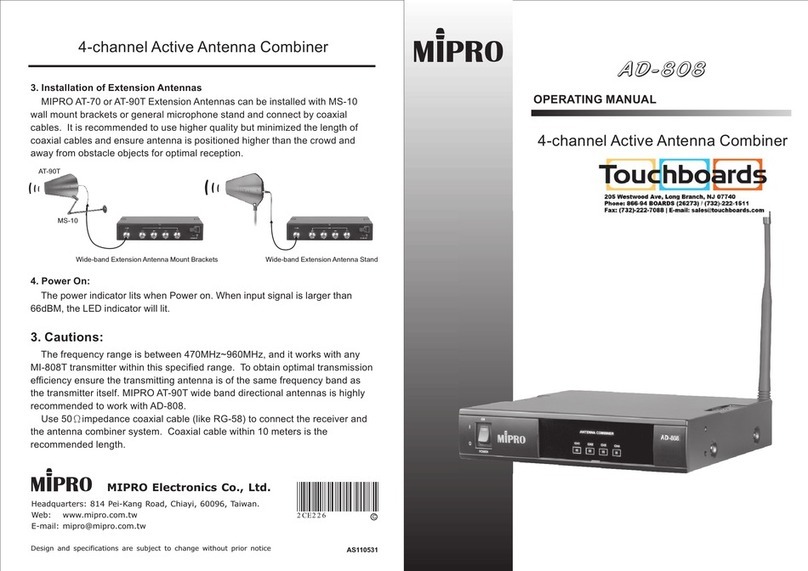
Touchboards
Touchboards MIPRO AD-808 operating manual
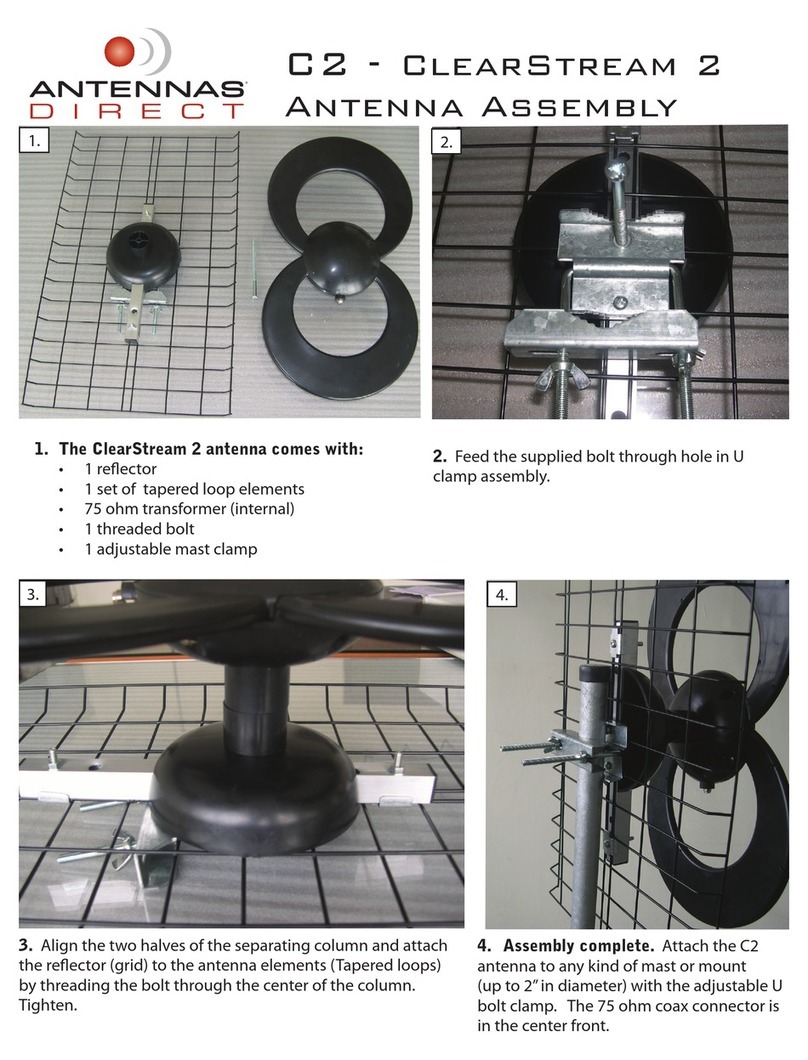
Antennas Direct
Antennas Direct ClearStream 2 Assembly instructions
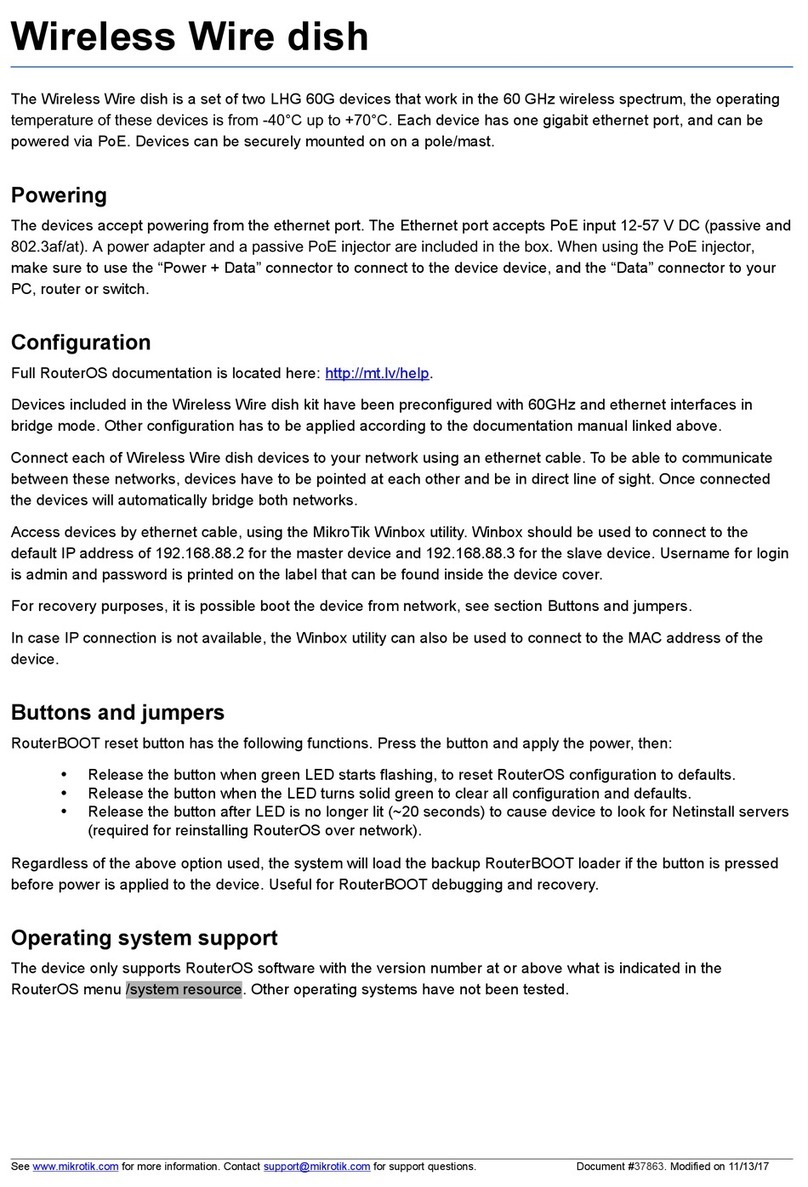
MikroTik
MikroTik LHG 60G user manual
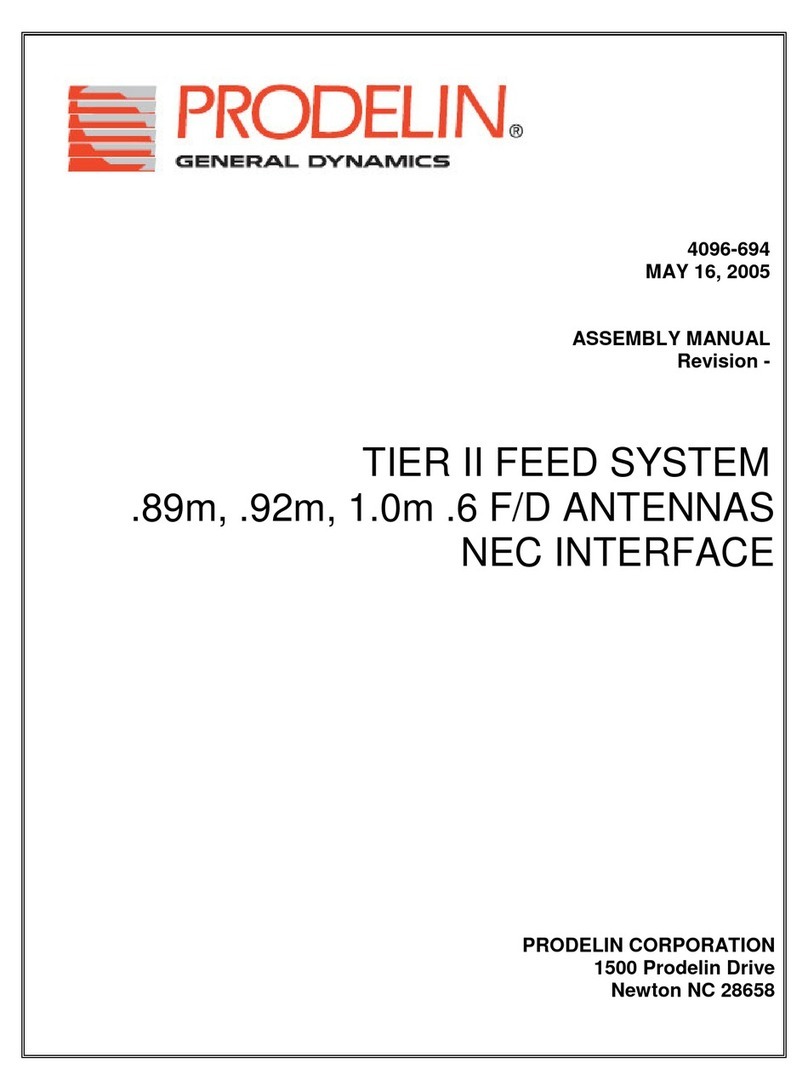
prodelin
prodelin TIER II Assembly manual
